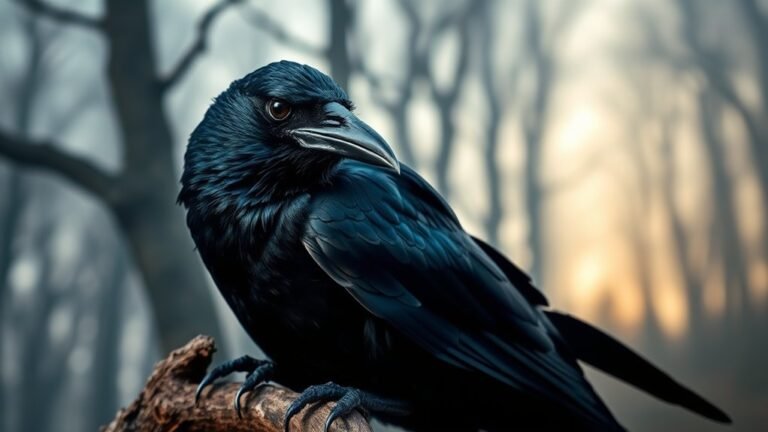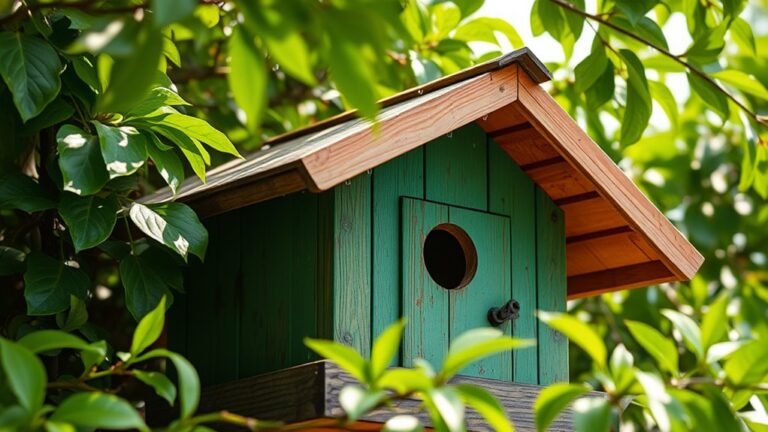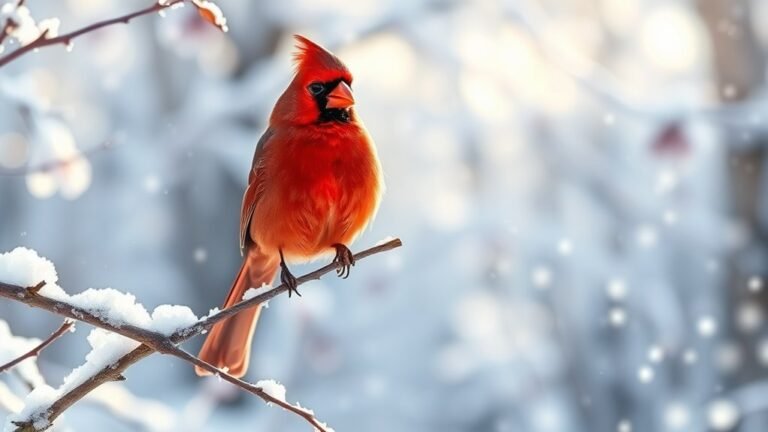Which Bird Sounds Like an Owl? Unraveling Nocturnal Mysteries
At night, you might hear various bird sounds that can be confusing. Birds like the Eastern Whip-poor-will and the Common Nighthawk can mimic owl calls very well. This mimicry helps them survive and mark their territory. Knowing these calls can increase your enjoyment of nighttime wildlife. What other birds might have owl-like sounds?
Key Takeaways
The Eastern Whip-poor-will makes calls similar to those of owls to mark its territory and keep rivals away. The Common Nighthawk produces a "peent" sound that also sounds like owl calls, helping it claim its territory.
Both the Eastern Whip-poor-will and Common Nighthawk provide insight into nighttime wildlife through their mimicry. Identifying these birds enriches our understanding of the varied sounds we hear at night. Observing these creatures highlights their importance in maintaining ecological balance.
The Allure of Nocturnal Sounds

As night arrives, the environment changes, revealing a variety of sounds that may typically go unnoticed. You might feel drawn to this nighttime chorus, where slight changes in animal sounds create an interesting audio landscape.
Each movement in the bushes or distant calls carries significance, reflecting the behaviors of local wildlife. From the soft croaks of frogs to the eerie sounds of nightjars, these calls resonate and create a connection to the natural world.
Common Owl Mimics in the Wild
Have you ever listened for birds that mimic owl calls at night? Some birds replicate these sounds to communicate better.
The Eastern Whip-poor-will has a call that can be confused with an owl's hoot. The Common Nighthawk makes a unique "peent" sound that can also resemble an owl.
These birds might use owl-like calls to mark their territory or to keep competitors away. By recognizing these calls, you can gain a deeper appreciation for nighttime wildlife.
Every sound matters in nature, adding to the beauty of the environment.
The Barred Owl: A True Nocturnal Vocalist

The Barred Owl is a true vocal expert of the night. It's known for its famous call, "who cooks for you." This unique sound travels through forests, making it easy to recognize.
The Barred Owl's calls have a pattern of rhythmic hoots mixed with whistles. These calls help the owl find mates and mark its territory.
Beyond its calls, the Barred Owl plays an essential role in its ecosystem. Its presence indicates a healthy environment.
The Eastern Whip-poor-will: A Surprising Sound-alike
The Eastern Whip-poor-will is an interesting nocturnal bird known for its unique call. This call sounds like a soft owl hoot and adds to the beauty of night sounds.
The bird primarily calls during dusk and dawn, encouraging people to listen closely. While foraging at night, the Eastern Whip-poor-will hunts insects using its sharp hearing and quick flight.
Although its call resembles that of an owl, this bird has distinct behaviors and plays a specific role in its ecosystem. Noticing its presence can help you connect with nature and appreciate the night's sounds.
Next time you hear its call, consider the important role the Whip-poor-will plays in our nighttime environment.
The American Woodcock's Unique Call

The American Woodcock produces a unique call that resonates during spring's twilight.
The male Woodcock performs a sky dance while making a peent sound, followed by a series of twittering noises as he lands. These calls attract females and mark territory.
The rhythmic quality of the Woodcock's call distinguishes it from other birds. Listening to this sound enhances your connection to nature's evening chorus.
Other Birds With Owl-Like Calls
At night, various birds produce calls that resemble those of owls. This creates a captivating sound environment.
The Eastern Whip-Poor-Will and the Common Poorwill have calls that can be confused with owl hoots.
To enjoy these birds, use nocturnal birdwatching techniques to improve your ability to identify their sounds. Learning to recognize bird calls is important, as subtle differences help distinguish each species.
The Importance of Bird Calls in Nature
Bird calls play an essential role in nature. They help birds communicate with each other. These calls guide behaviors like mating, finding food, and establishing territories. Each call provides important information. Birds use calls to warn others about threats and to signal food sources. Vocalizations create connections among birds and strengthen their social bonds.
Bird calls support the survival of species and maintain the balance of ecosystems. Each bird relies on others for survival, making these calls vital for habitat stability.
How Birds Use Vocal Mimicry
Birds mimic other species' sounds for important reasons. Vocal mimicry helps them survive and adapt. Here are key functions of this behavior:
- Territorial Defense: Birds use mimicry to establish dominance. They can assert their territory without direct conflict.
- Attracting Mates: By mimicking appealing sounds, birds signal their fitness to potential partners. This can increase their chances of attracting a mate.
- Predator Evasion: Some birds imitate alarm calls of other species to confuse predators. This strategy helps them stay safe.
Nocturnal Bird Communication and Behavior
Nocturnal birds communicate in unique ways. They use various calls for different purposes like marking territory, attracting mates, and warning others of danger.
For example, owls produce soft hoots to establish space and create a calming effect for mates. In contrast, nightjars make quick calls to alert others to predators.
Studying these behaviors helps us understand how nocturnal birds thrive in their habitats. Observing them at night reveals an exciting aspect of nature that many people overlook, leading to a greater appreciation for wildlife and its challenges.
The Role of Sound in Bird Courtship
Sound is key in bird courtship. Birds use vocalizations to attract mates. These calls show their health and strength.
Here are the main ways sound affects bird courtship:
- Vocalizations: Each bird has distinct calls that signal fitness to potential mates.
- Mating displays: Birds combine sounds with visual moves to boost attraction.
- Environmental adaptation: Birds adjust their sounds to fit their surroundings, allowing better communication.
These sounds create a clear signal in the courtship process. Birds use them to find partners that match their vigor and traits. Sound plays an important role in choosing the right mate.
Tips for Identifying Nighttime Bird Sounds
Have you ever wanted to identify nighttime bird sounds? It takes practice and focus.
Start by listening for different sound patterns. For example, the hoot of an owl sounds different from the song of a nightingale.
Keep a sound journal. Write down the calls you hear, along with details like location and time. Use apps or recordings to help you recognize these sounds and compare them to your notes.
Joining local birdwatching groups is a great way to learn from others and share your experiences. Connecting with fellow birdwatchers can improve your skills and help you appreciate the beauty of nighttime birds.
Protecting Nocturnal Bird Habitats for Future Generations
Understanding nighttime birds is important, but protecting their habitats is crucial for their survival.
Conservation efforts help preserve these birds and their environments. You can help by:
- Supporting groups that work to save bird habitats.
- Joining local clean-up events to keep nature clean.
- Encouraging laws that protect wildlife and their homes.
Frequently Asked Questions
Do All Owls Hoot, or Do Some Chirp?
Not all owls hoot. Some owls make sounds like screeches or chirps. Owls communicate in different ways, which helps them send various messages. By listening to these sounds, we can learn more about their behaviors and how they interact with each other.
Can Owls and Their Mimics Be Found in Urban Areas?
Yes, owls and their mimics can live in urban areas. They adapt to city life by using parks and gardens for hunting. These birds showcase their ability to thrive at night while surrounded by the sounds and activities of the city.
What Time of Night Do Owls Typically Call?
Owls typically call at dusk and dawn. They are most active at night. During this time, they communicate to mark their territory and attract mates. Understanding their calling patterns helps you appreciate these interesting birds.
How Can I Attract Owls to My Backyard?
To attract owls to your backyard, you can set up owl feeders and nesting boxes. Providing shelter and food helps draw these nocturnal birds in. This creates a friendly environment and allows you to connect more deeply with nature. Enjoy the sights and sounds of these fascinating creatures as they visit your space.
Are Owl Calls the Same Across Different Owl Species?
Owl calls differ among species. Each type of owl has its own sounds that help it communicate. These vocalizations show how owls behave and live in their environments. Learning about these variations can increase your enjoyment of owls and their nighttime activities.

Ava is a bird enthusiast and nature lover who has spent countless hours observing and learning about the fascinating world of birds. With a passion for sharing her knowledge and inspiring others to appreciate the beauty of birds, Ava writes about her experiences and insights on avianadmirer.com.







